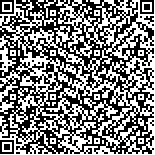本文已被:浏览 855次 下载 617次
Received:May 24, 2021 Published Online:September 20, 2021
Received:May 24, 2021 Published Online:September 20, 2021
中文摘要: 目的 通过检测细胞炎症因子,判断脓毒症患者的免疫功能状态,观察个体化应用免疫调节剂的疗效。方法 选取2019 年1月至2020年12月山西省汾阳医院收治的70例脓毒症患者为研究对象,随机分为观察组(42例)和对照组(28例),剔除5 d内死亡的观察组2例和对照组3例脓毒症患者。对照组25例脓毒症患者根据中国脓毒症/脓毒性休克急诊治疗指南(2018)进行诊疗。观察组40例脓毒症患者通过检测肿瘤坏死因子(TNF)-α、白细胞介素(IL)-2R、IL-6、IL-8、IL-10水平,判断免疫状态[全身炎症反应综合征(SIRS)、 代偿性抗炎症反应综合征(CARS)及混合性拮抗反应综合征(MARS)],其中,10例轻度脓毒症SIRS患者予以抗感染等常规治疗;12例SIRS伴休克患者,加用小剂量糖皮质激素治疗;18例CARS或者MARS患者,加用人免疫球蛋白治疗。比较两组患者治疗前及治疗12 h、24 h后平均动脉压(MAP)、心率(HR)、氧合指数(PO2/FiO2)及血乳酸(Lac)水平;治疗前及治疗5 d后急性生理学及慢性健康状况评分系统(APACHE-Ⅱ)和序贯器官衰竭(SOFA)评分、不良反应发生率、28 d死亡率。结果 治疗前两组患者各项指标无差异(P>0.05);治疗12 h、24 h后两组患者MAP、PO2/FiO2高于治疗前,HR、Lac水平低于治疗前,随时间的延长各指标改善明显,且观察组改善更明显(P<0.05);治疗5 d后两组患者APACHE-Ⅱ和SOFA评分低于治疗前,观察组改善更明显(P<0.05);两组患者不良反应发生率及28 d死亡率无显著差异(P>0.05)。结论 通过检测细胞炎症因子,判断脓毒症患者的免疫功能状态,进而个体化应用免疫调节剂可提高治疗效果。
Abstract:Objective Through the detection of cellular inflammatory factors, to judge the immune function status of sepsis patients and observe the curative effect of individual application of immunomodulator. Methods A total of 70 sepsis patients who received treatment at Fenyang Hospital, Shanxi Province from January 2019 to December 2020 were selected and divided into observation group (n=42) and control group (n=28). Two patients in the observation group and three patients in the control group who died within 5 days were excluded. Twenty-five patients with sepsis in control group were diagnosed and treated according to Chinese Guidelines for Emergency Treatment of Sepsis/Septic Shock (2018), and 40 patients with sepsis were selected as observation group,whose immune status [systemic inflammatory response syndrome(SIRS), compensatory anti-inflammatory response syndrome(CARS), mixed antagonistic response syndrome (MARS)] were judged by detecting the values of tumor necrosis factor alpha(TNF-α), interleukin(IL)-2R, IL-6, IL-8 and IL-10. In observation group, 10 SIRS patients with mild sepsis were treated with routine anti-infection treatment, 12 SIRS patients with shock were treated with low dose glucocorticoid based on routine treatment, and 18 patients with CARS or MARS were treated with human immunoglobulin based on routine treatment. The values of mean arterial pressure (MAP), heart rate (HR), oxygenation index (PO2/FiO2) and blood lactic acid (Lac)before treatment and 12- and 24-hour after treatment, the scores of acute physiology and chronic health evaluation (APACHE-Ⅱ) and sequential organ failure assessment (SOFA) before and 5 days after treatment, the incidence of adverse reactions and 28-day mortality were compared between two groups. Results Before treatment, there was no significant difference in all indexes between two groups (P>0.05). At 12-and 24-hour after treatment, MAP and PO2/FiO2 increased, and HR and Lac decreased compared with those before treatment in two groups. With the lapse of time, all indexes improved significantly in both groups,and the improvement was more obvious in observation group than that in control group (P<0.05). After 5 days of treatment, APACHE-Ⅱ and SOFA scores decreased compared with those before treatment in two groups and were lower in observation group than those in control group (P<0.05). There was no significant difference in the incidence of adverse reactions and 28-day mortality between two groups (P>0.05). Conclusion Based on the detection of inflammatory cellular factors for judging the immune function of patients with sepsis, the individual application of immunomodulator can improve the therapeutic effect.
keywords: Sepsis Immunomodulator Inflammatory cellular factors Immune function Glucocorticoid Immunoglobulin
文章编号: 中图分类号: 文献标志码:A
基金项目:山西省卫生健康委科研课题(2019154);山西省卫生健康委科研课题(12);山西省新型冠状病毒肺炎(2019-nCoV)疫情防控紧急科研攻关项目(202003D32001/GZ);吕梁市科技重点研发项目(2018shfz65-2)
引用文本:
